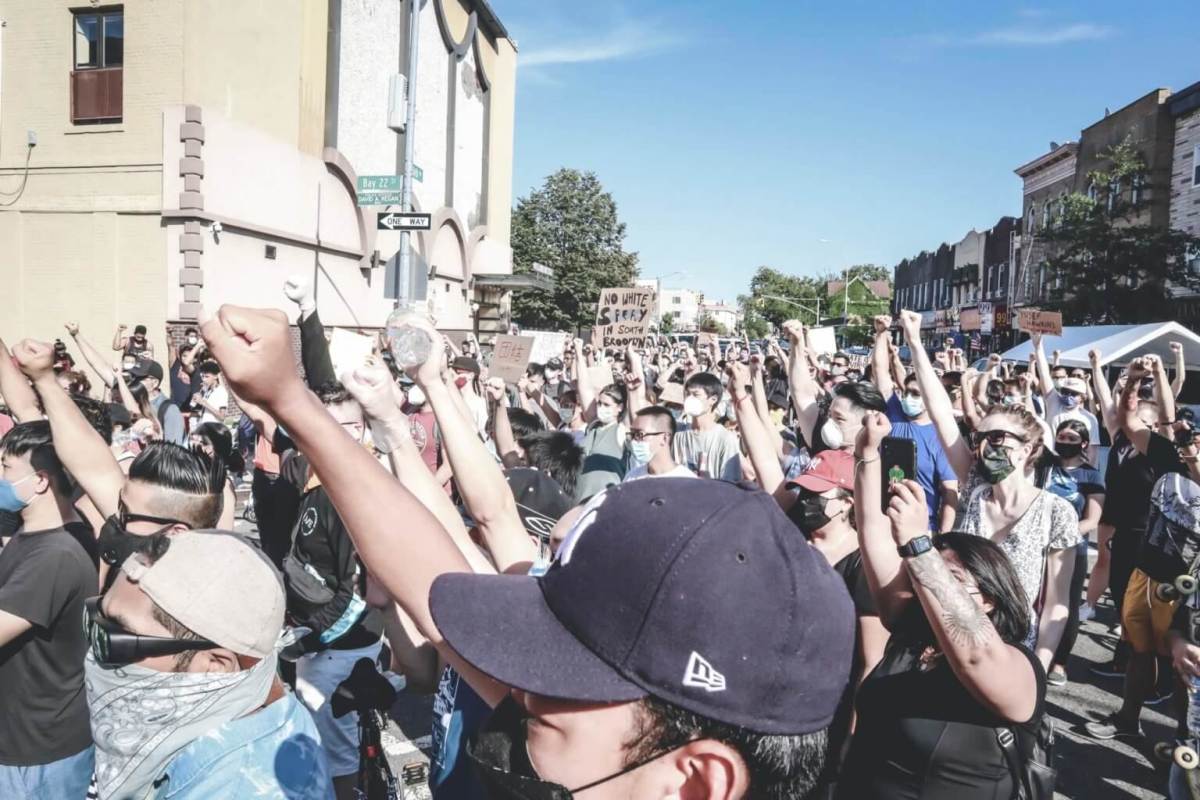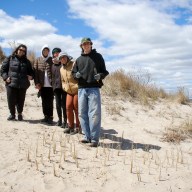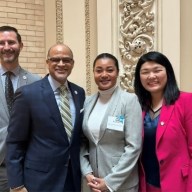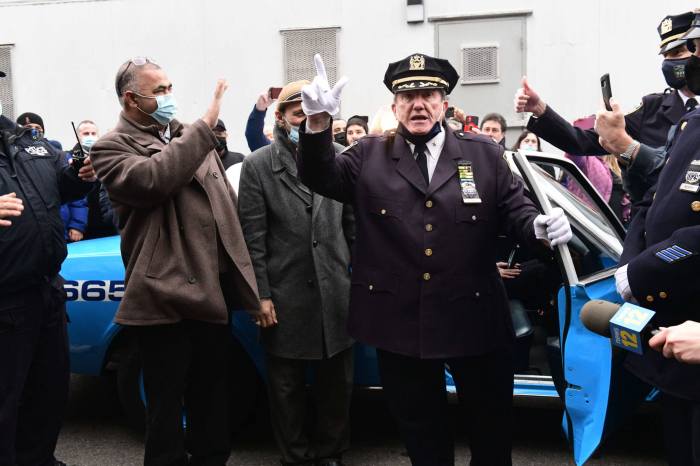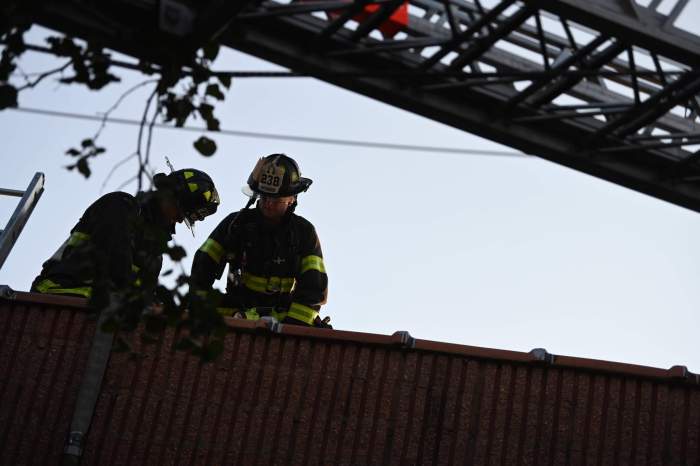Asian residents of Bensonhurst hope that a redistricting commission tasked with drawing up new maps for City Council districts finally makes the community whole by creating something that has long been lacking: political representation in City Hall.
At the Council Redistricting Commission’s Brooklyn meeting at City Tech on Wednesday, speaker after speaker from Bensonhurst urged the community to consider creating a new, plurality Asian district in southern Brooklyn to ensure the fastest-growing demographic group in Kings County has a full-fledged seat at the table in decision-making over the next decade. The neighborhood at present is split between four separate districts.
“This is critical, not only because it dilutes Asian-American power in a community of interest that has so many things in common, but it also prevents Asian-Americans from fully participating in civic engagement,” said civil rights attorney Elizabeth OuYang in testimony to the commission. “It dilutes our community and not only are [Asian Pacific Americans] not willing to run for office, but it impacts our community’s ability to vote, and if their vote will make a difference.”
“We believe it is possible to keep Bensonhurst as whole as possible by creating a near majority APA district,” OuYang continued. “This is long overdue.”
The neighborhood was long known as a hub for Brooklyn’s Italian population, but in recent decades has seen a large influx of immigrants from Asia, particularly China.
Asians are the fourth largest racial demographic group in Brooklyn, at 13.7% of the borough’s population. But they’re also the fastest-growing group: the 2020 Census showed the Asian population of Brooklyn grew in the past decade by more than 100,000 people, a 42.5 percent jump. Much of that community has settled in a swath of southern Brooklyn including Kensington, Sunset Park, Bensonhurst, Gravesend, and Sheepshead Bay.
The growing community has notched a few wins for representation in the past few years: last year, voters in the 39th District elected the borough’s first Asian-American councilmember, Shahana Hanif, providing long-lacking representation for Kensington’s Bangladeshi community. And though the state’s redistricting process was chaotic, one thing that came out of it was a new, plurality-Asian State Senate district centered on Bensonhurst.
The split keeps the Asian community politically balkanized and unable to make effective political action, advocates say, as Asians are a small minority in each district comprising Bensonhurst, preventing the community writ large from flexing its muscle politically or even electing its own candidates. They say it also reduces the amount of money nonprofits and social service providers can take home from City Hall to the community.
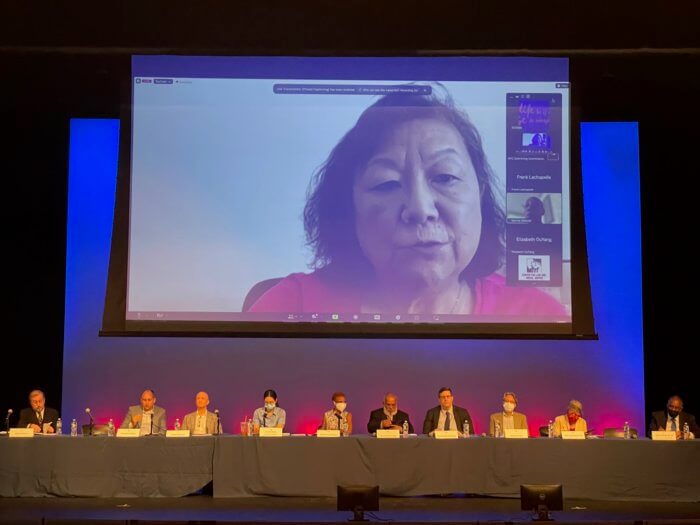
“It is important to keep a community as whole as possible because it ensures more voting power for our communities to elect a candidate of their choice,” testified Ashley Chen from the Chinese-American Planning Council. “It is critical that we elect candidates that respond meaningfully to the needs and demands of our communities.”
The redistricting commission has been holding meetings since March to gather input for the new maps, which will first be used in upcoming City Council elections in 2023 (which will be held two years after the previous round to reflect the reapportionment).
The commission — whose members were appointed by Mayor Eric Adams and the City Council’s majority and minority caucuses — must redraw the district lines based on changes in population identified in the Census; some districts will have to grow larger, while others will have to shrink in size. The commission’s hearings also provide the public an opportunity to present their case for district drawings designed to maximize voter power for certain “communities of interest.”
Asian Brooklynites were not the only group to present their pitch to the commission on Wednesday. Residents of Bedford-Stuyvesant and northern Crown Heights, including local Councilmember Chi Ossé, testified to the commission on their desire to see a “unified” district in Central Brooklyn comprising the entirety of the two historically Black districts, specifically calling for the northern Crown Heights section to extend down to Eastern Parkway.
Presently, the neighboring 35th District stretches into Crown Heights a few blocks above Eastern Parkway, but that district saw population growth in the past decade while Ossé’s 36th District has lost residents, which he says justifies extending his district down to the parkway’s “natural barrier.”
“While clear cultural boundaries exist between ours and neighboring districts, the cohesion of Bed-Stuy and North Crown Heights is strong,” Ossé said. “And our unification in a single district has served us well for decades.”
South of Eastern Parkway, Crown Heights’ Lubavitcher Orthodox Jews also say they should be unified into a single district, where they would still be a minority but would exercise a greater political voice than the present situation where they’re divided into three districts.
“The vast majority of the Jewish residents of this area are affiliated in some way or another with the Chabad-Lubavitch movement,” said Rabbi Eli Cohen, executive director of the Crown Heights Jewish Community Council. “It’s one religious movement, centered at the main synagogue, 770 Eastern Parkway, right at the center. It’s a very tight area, which right now is split into three districts. And I think because this is a relatively small community, it can be kept together and still not infringe on anyone else’s issue.”
The commission is expected to release preliminary maps on July 18 before holding another round of public hearings. It intends to submit its plan to the City Council in mid-September; the deadline for a final plan is next February.
Editor’s Note: Brooklyn Paper’s publisher, Josh Schneps, is a member of the Redistricting Commission.


